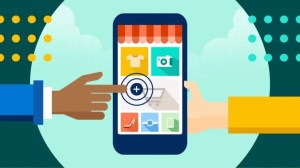Cross-selling involves selling related, supplementary products or services based on the customer’s interest in, or purchase of, one of your company’s products.
Its a great way of increasing customer loyalty and deeping customer relationships which in turn can improve customer lifetime value and retention.
This makes cross-selling an excellent growth strategy.
Achieve cross-selling excellence with a CRM: Learn more in the Complete CRM Handbook



What we will cover:
Cross-Selling vs. Upselling
Examples of Cross-Selling
Benefits of Cross-Selling
Potential Drawbacks of Cross-Selling
Steps for Cross-Selling to Customers
Cross-Selling techniques
Cross-Selling: Key facts and FAQs
Cross-Selling vs. Upselling
Cross-selling and upselling are two distinct practices that involve approaching existing customers and convincing them to purchase additional products or services. In the case of upselling, your goal is to sell a more expensive, more advanced product to the customer than they had planned by conveying its added benefits.
One example of upselling would be a cable television provider selling a premium plan with a more extensive selection of channels to a current subscriber of a basic package. Upselling may also entail approaching the customer at the point of sale for one product, offering a more advanced alternative.
In both upselling and cross-selling, companies must effectively utilise their existing and potential customer base to increase sales by offering appropriate additional products to the right customers. However, cross-selling never involves encouraging customers to replace their current choices with more expensive ones.
Examples of Cross-Selling
Some examples of cross-selling include an electronics retailer offering a deal on a computer case, mouse, and screen cleaning wipes to a customer who purchases a new laptop, or an insurance provider offering renters’ insurance to its car policyholders.
Get fresh insights from 7,700 sales professionals.
Dig into our latest report to learn how sales professionals are driving productivity and efficiency.



Benefits of cross-selling
The main benefits of cross-selling include increased sales revenue, improve customer satisfaction and in B2B businesses, increased Customer Lifetime Value (CLV) through deeper integration in a customer’s business.
When it works, cross-selling is great for both you and for your customers. The ideal situation is one where your existing customer is not aware of a product or service that would improve their customer experience. You find them on their customer journey at the ideal point, via their preferred contact method, and they react positively and go on to purchase the recommended product. Your sales increase, and their customer satisfaction increases because the product better fits their needs.
Potential Drawbacks of Cross-Selling
When it doesn’t work, cross-selling can be annoying for customers and ineffective at generating sales. This is almost always down to a lack of planning or appropriate data. If you recommend a product that makes no sense – for instance, promoting winter clothing to a customer who just bought a bathing suit – you may drive that customer away. If you approach a customer by phone who would typically place orders via email, you may not be able to make contact.
And strangely enough, cross-selling is not always a great idea, even when it works. According to a Harvard Business Review study published in 2012, certain types of problem customers can actually make cross-selling a profit-losing strategy. According to Denish Shah and V. Kumar, some customer types can put stress on your customer service staff, whether by returning or cancelling a large number of goods and services or withholding spending in other areas to spend on your cross-selling promotions.
It’s crucial to analyse customer data and metrics related to your cross-selling marketing campaigns to evaluate which efforts produce cross-sales without reducing overall profitability, and which customers should be left out of cross-selling or approached with different methods, such as upselling. In general, cross-selling too many options to too many customers can be a losing endeavour if you don’t have a well thought out strategy in place.
Steps for Cross-Selling to Customers
- Identify related products and services suitable for cross-selling
- Identify suitable customers ready for a cross-selling
- Develop a cross-selling campaign and customer journey
Before you can convince your customers to respond to cross-selling efforts, you need to identify which products and services go together: What do customers typically buy as add-ons to their purchases? What products are usually purchased together? Or even, what products have been successful in previous cross-selling campaigns? Solid data makes all the difference.
Say your company is a fitness centre: Do some of the members often buy drinks at your front desk? They might be interested in a supplementary beverage program for a flat monthly fee. Or maybe your online electronics shop has wireless headphones that could be marketed to recent smartphone buyers – these customers may even have browsed for headphones, but left them in their shopping carts without purchasing.
Identify related products and services suitable for cross-selling
The next step in creating effective cross-sellingcampaigns is targeting the right audience. Identifying cross-sellcustomers starts with the data you gather from your customers at every stage of their customer journey.
You can use information about in-person and digital communication your company has had with customers, their purchasing and browsing histories, whether they’ve repeatedly returned merchandise or cancelled services. All of this information can help you identify the best candidates for a cross-selling campaign. You can also target “look-a-likes” who demonstrate similar behaviours or characteristics to these customers.
Identify suitable customers ready for a cross-selling
Organising the information you receive through customer purchase histories and interactions is infinitely more effective when you use sales and marketing software with effective tools for CRM, and even better when coupled with AI-assisted sales analytics. Artificial Intelligence tools can automatically contact customers who display interest in certain products without the need for your staff to set up a new campaign each time. This frees up your marketing and sales staff for the more personal interactions that machines can’t perform.
Develop a cross-selling campaign and customer journey
Once you’ve identified customers who are ideal candidates for cross-selling, you’ve got to convert them. You then need to develop a strategy for presenting the potential cross-sales. If you have an online store, cross-selling through ads that appear during the checkout process can be effective, as can email campaigns targeting those who recently purchased a product. For higher cross-selling conversion rates, test out different approaches to making contact with customers, and adjust your approach based on analytics-based results.
Cross-selling techniques
Now that you’ve identified the customers you’d like to approach and the products you’d like to cross-sell, here’s some advice about techniques and some cross-selling tips to keep in mind:
- Offer the customer additional products and services that will genuinely provide them with added value: Think about cross-sales from your a customer’s point of view, not just in terms of how much revenue you think you can generate. If you’re utilising a CRM, fewer well-placed offers are far more valuable than a greater range of offers that don’t benefit your customer relationships.
- Find your customers at effective touch points on their customer journey: If they’ve used your website to place orders, email or targeted ads might be the best method for cross-selling. If they’re more likely to visit a store in person, a salesperson is more likely to cross-sell additional products and services to them in person or on the phone.
- Use your existing inbound marketing campaigns to promote supplementary products and services: If you have content targeting an audience that buys luxury cars, for instance, you can include ads for car accessories on your blog posts and product descriptions to encourage cross-sales.
- Make effective use of the data your customers provide: The new generation of consumers expects personalised service, even when it comes to upselling and cross-selling, and the tools for providing that through solid data are out there.
- Encourage cross-sales by creating spaces for interaction between customers: An online community for skateboard buyers may be as effective at encouraging sales of additional wheels and other parts as your direct marketing efforts.
- Make use of social selling techniques: For example, social media influencers are a valuable tool for reaching the widest possible audience in the current, predominantly digital sales environment. Offer incentives for influencers who already promote your products to mention supplementary products on their social media channels.
When handled with care, Cross-selling can be an effective way to increase sales revenue for your company. While you should take advantage of potential cross-sales, you need tools for gathering and analysing data to use cross-selling in a way that benefits your business and your customers.
Managing your marketing and sales data intelligently gives you a competitive edge on your cross-selling efforts, thanks to sales AI. Find out more about Salesforce’s cloud software and Einstein Analytics with a deep dive into AI.
That’s a lot of info!
Here’s what you should take away from this article:
- What is cross-selling? Cross-selling is the process of offering a customer products that are compatible with the ones they’re purchasing.
- What’s the difference between cross-selling and upselling? Upselling is the practice of selling a more expensive product to a customer, while cross-selling is offering supplementary products.
- What’s an example of cross-selling? An example of cross-selling would be offering a deal on a computer case to a customer who purchases a laptop.
- What are the benefits of cross-selling? Benefits of cross-selling include increased sales revenue, improved customer satisfaction and increased Customer Lifetime Value (CLV).
- Are there drawbacks to cross-selling? When it doesn’t work, cross-selling can be annoying and ineffective. This is usually down to offering incompatible or inappropriate products.
- What are some steps for cross-selling to customers? The most important part of any cross-selling strategy is identifying products or services that are compatible with one another. After that, it’s identifying which customers are most likely to benefit.
- What are some cross-selling techniques? When cross-selling, it’s important to always try to add value to the customer experience. You’ll also want to make sure that you’re offering the appropriate products at the appropriate touchpoints.
Cross-selling isn’t limited to burgers and software. It can be valuable in any industry, with any product.
Case in point: As a sales consultant, my clients sometimes need more than a basic training course or hour-long coaching session. Cross-selling books, additional training, or sales resources is almost always an option — and to make sure the door is open for those cross-sells, I continuously deliver valuable articles or insights to build trust. Then, when an opportunity presents itself, I go for the cross-sell.
This happened recently, shortly after the launch of my third book on sales. I had a few clients at the time who showed some interest in additional training for their sales teams, but I didn’t know exactly what they were looking for. So, I asked open-ended questions like, “What industry-specific insights or examples would be helpful?” and “What’s the best learning modality for your team?”
Eventually, I uncovered a good fit: a few clients with smaller sales teams that wanted resources sellers could use on their own time. I confidently proposed a cross-sell in our regular check-in conversations, offering bulk copies of my book at a discounted rate. Happily, they accepted, and many have noted since that the book has made their training more impactful.
Frequently asked questions
What is cross selling and why is it important?
Cross-selling involves selling customers related items when they are making a purchase. It’s important not only because it boosts revenue, but also because it increases customer satisfaction, builds engagement, and helps to create solid and lasting customer relationships
Does cross selling work?
Yes. Cross-selling provides value for both businesses and customers, leading to increased revenue, increased customer satisfaction and better long-term relationships. This is assuming that cross-selling is done correctly – as the products or services being cross-sold must be appropriate and fit the needs of the customer.
What is an example of cross selling?
Cross-selling involves offering additional products that complement a purchase. For example, if a customer is buying a new bike, the retailer might offer them a discount on a tyre pump or a bike light. An electronics retailer might offer a case, an external hard drive and a mouse with the purchase of a new laptop.














![If you want to see your business grow and flourish, you must develop an effective pricing strategy that's appropriate for your goals. [Studio Science]](https://www.salesforce.com/ap/blog/wp-content/uploads/sites/8/2024/03/Pricing-Strategy-Examples.webp?w=150&h=150&crop=1&quality=75)



![Sales support handles the essential functions that allow sales reps to focus on what they do best — sell. [Adobe]](https://www.salesforce.com/ap/blog/wp-content/uploads/sites/8/2024/02/Sales-Support.webp?w=150&h=150&crop=1&quality=75)




